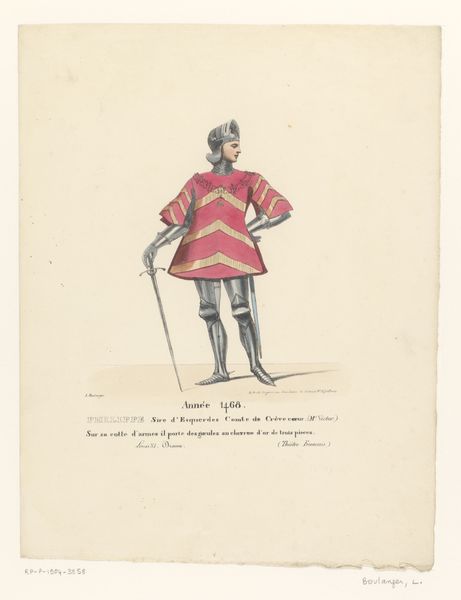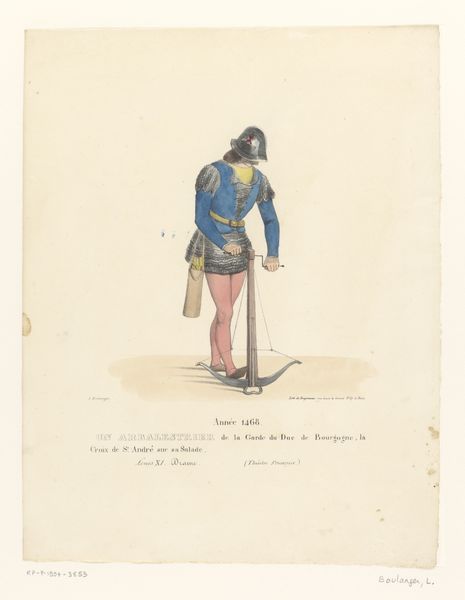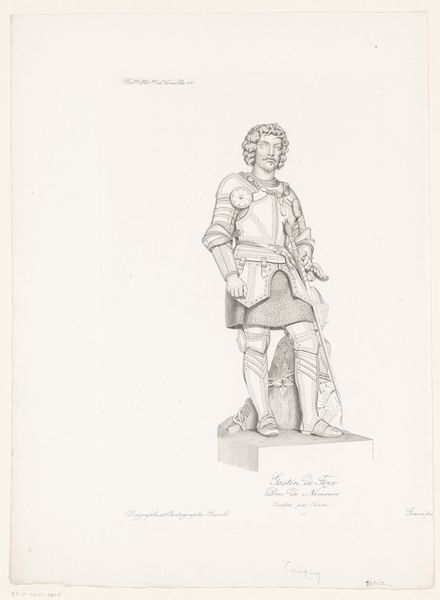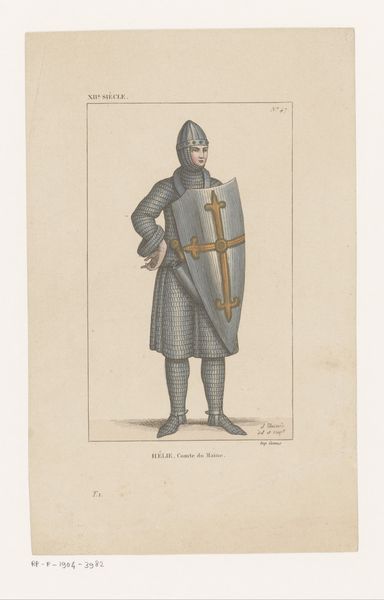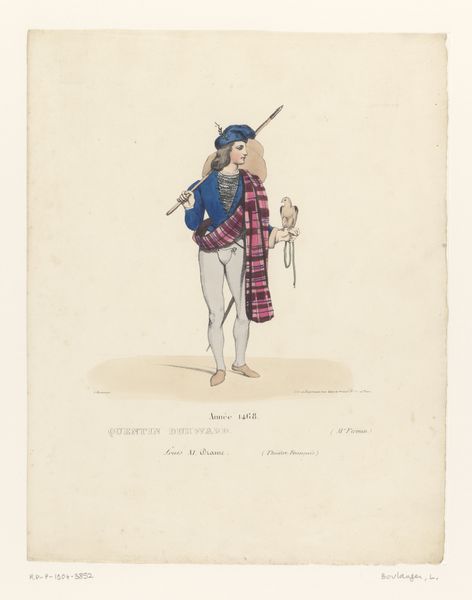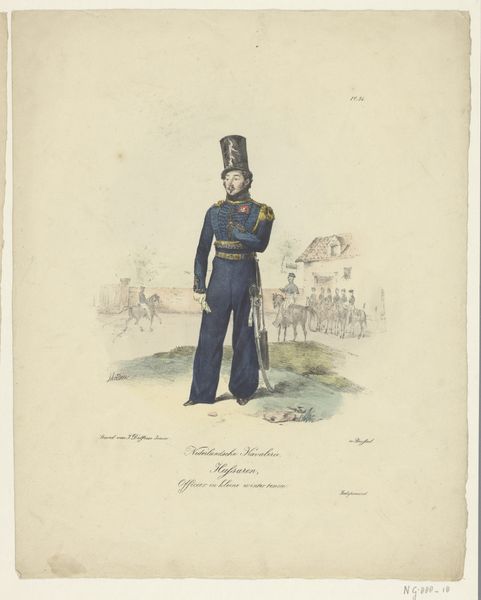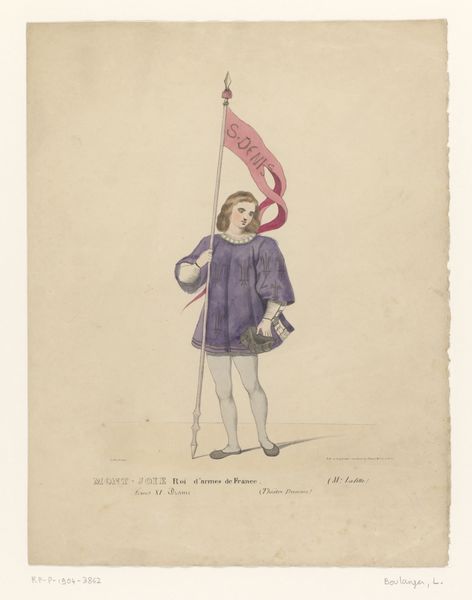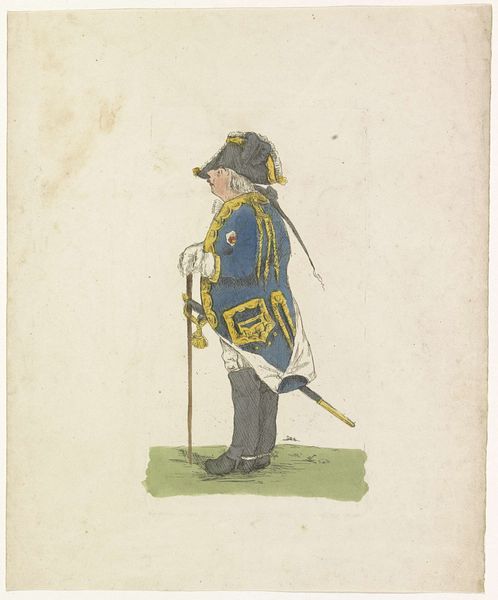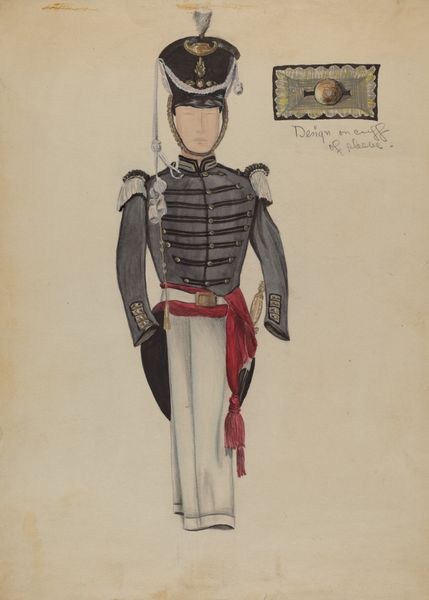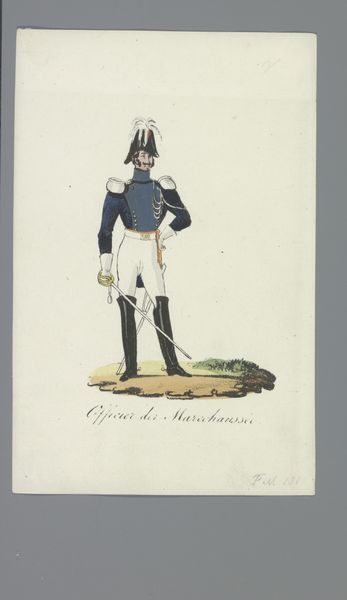
Kostuum van de graaf van Dunois uit het drama Louis XI à Péronne 1826
0:00
0:00
louisboulanger
Rijksmuseum
drawing, paper, watercolor, ink
#
drawing
#
figuration
#
paper
#
watercolor
#
ink
#
romanticism
#
watercolour illustration
#
history-painting
Dimensions: height 343 mm, width 268 mm
Copyright: Rijks Museum: Open Domain
Curator: Here we have Louis Boulanger’s 1826 drawing, “Kostuum van de graaf van Dunois uit het drama Louis XI à Péronne,” a costume design rendered in ink and watercolor on paper, now residing here at the Rijksmuseum. Editor: My initial reaction is of theatrical pageantry, but with a melancholy wash of colour, as though the play itself is a comment on lost power, the blues and greys suggesting a world defined by formal rules rather than genuine force. Curator: Exactly! Boulanger's Romantic sensibility is at play here, showcasing not just historical fashion, but also a critical lens examining performance. Think about the context: post-Revolutionary France grappling with its identity through theatre, reclaiming or reimagining the past. What narratives are being perpetuated here, and whose stories are being erased or stylized? Editor: The costume itself speaks volumes. The fleur-de-lis, the polished armour – overt symbols of French royalty and nobility, evoking bravery and the divine right to rule. Note also the vulnerable points exposed: the neck, the hands, implying that even power, when displayed, is prone to compromise and subversion. Is it perhaps the tragedy of visibility? Curator: The play and the art provide us an opportunity to evaluate how symbols of authority were, and still are, employed. This figure stands erect, armed and ready, as much constrained as they are protected by these rigid external displays of identity. In what ways does it allow the viewer to confront performative constructs within their own personal context? Editor: Right, there's also the more primal reading to be made. We see the gleaming steel of the armour against skin, juxtaposing protection and vulnerability, constraint and freedom. It speaks to how codes can shape how a character exists, creating layers that mediate experience itself. Curator: It really encapsulates how, as historians, we must contend with not just *what* is presented, but also the cultural work the imagery performs. The echoes resonate even now, prompting critical examination of power and those who brandish it, whether onstage or on the political arena. Editor: The subtle coloring makes that point beautifully. This rendering suggests, not brute power, but a certain theatrical awareness, acknowledging the artificiality inherent in symbols, making this a piece about representation and recognition as much as power.
Comments
No comments
Be the first to comment and join the conversation on the ultimate creative platform.

